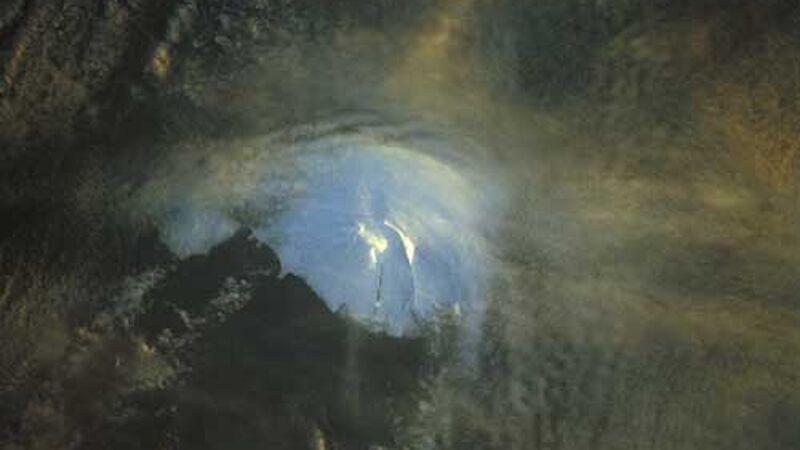Air-borne volcanic ash is composed of fine pulverised rock and accompanied by a number of gases, which become converted into droplets of sulphuric acid and hydrochloric acid -a mixture potentially deadly to aircraft and their passengers. In 1982, for example, a British Airways airliner lost all its engines on encountering ash from an Indonesian volcano, losing more than half its cruising altitude before engines could be restarted and an emergency landing made in Jakarta.
The main problem is that the ash melts in the hot section of the engine and fuses into a glass-like coating on components further back in the engine, causing loss of thrust and possible flame out. The ash can also cause abrasion of engine and other parts and clogging of fuel and cooling systems.
Darwin Volcanic Ash Advisory Centre, one of nine centres around the world advising aircraft about location and movement of ash clouds, takes in Indonesia, Papua New Guinea and part of the Philippines, as well as the region to the South Pole between 75°E and 160°E (see the Bureau of Meteorology website for more information). The Darwin centre combines satellite detection techniques with volcanological ground reports, pilot reports, meteorological knowledge and numerical models to track and forecast movement of ash clouds. Darwin’s focus is inevitably on the volcanically active region to its north. But Heard Island, just to the west of Darwin’s area of responsibility in an area officially unmonitored due to data sparsity, is of interest. And the Balleny Island group, southeast of Tasmania in New Zealand’s area of responsibility, is a potential problem area for Antarctic tourist flights. Volcanic ash can circle the globe very quickly at these latitudes and there is little geostationary satellite data in the region, making it hard to identify and track volcanic plumes. But new communications technologies and increased international understanding are helping to address the problem.
An excellent paper about possible recent Balleny Islands activity in which several international experts discuss this event, showed opinions divided on whether the data suggests volcanic activity, but there is agreement on the need for caution by aircraft operating in this area. Similarly, both Big Ben on Heard Island and the nearby McDonald Island are volcanically active, suggesting a need for aircraft flying overhead to be aware of the possible dangers.
Steve Pendlebury and Andrew Tupper
Australian Bureau of Meteorology

